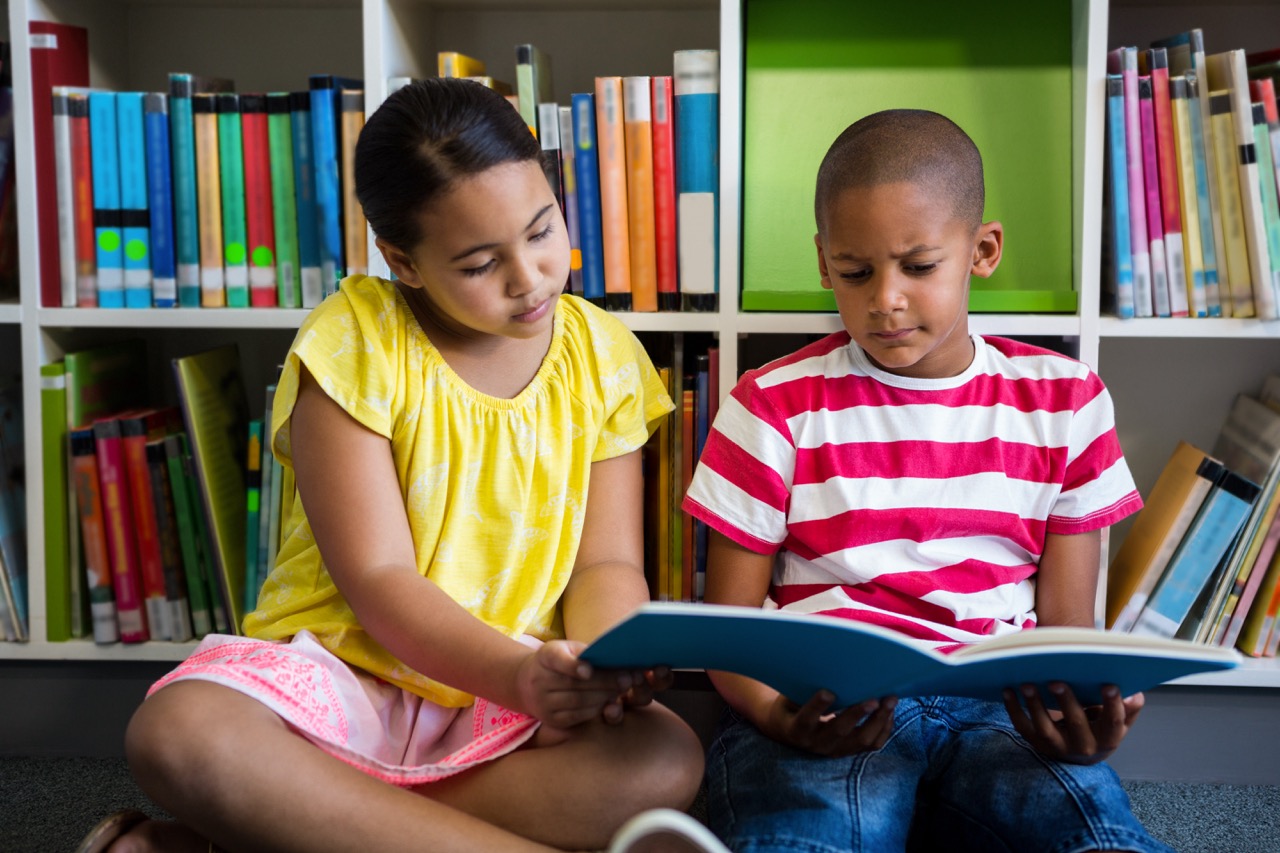In recent years, e-books have emerged as a transformative force in the literary landscape, especially for children. As digital devices become ubiquitous in homes and classrooms, young readers are increasingly turning to screens for their reading adventures. This shift from traditional print to digital formats has not only altered how children engage with stories but also reshaped their reading habits altogether. In this article, we explore how e-books are changing the way children read and learn, highlighting the myriad ways in which technology is fostering a new generation of readers.
The Rise of E-Books: A New Era for Young Readers
The advent of e-books has marked a significant turning point in the realm of children’s literature. As devices like tablets and e-readers become easier to access and more affordable, children of varying ages are discovering the joys of reading in a digital format. Publishers have recognized this trend, leading to an explosion of e-book titles that cater specifically to young audiences. From classic tales reimagined for digital consumption to contemporary stories designed exclusively for screens, the vast selection available ensures that there is something for every child.
Moreover, the integration of e-books into educational settings has further propelled their popularity. Schools increasingly adopt digital reading platforms, allowing educators to curate libraries of e-books that align with curriculum goals. As children navigate these e-libraries, they not only access books that pique their interest but also develop essential digital literacy skills that are crucial in today’s technology-driven world. This transition from print to digital is not merely a fad; it is a fundamental shift in how young readers consume literature.
As e-books continue to gain traction, they also serve as a bridge to traditional reading formats. Many e-books are designed to be read aloud or include features that encourage children to engage with the text in new ways. By blending the familiarity of storytelling with the innovative aspects of digital technology, e-books offer a unique reading experience that promotes a love for literature while ensuring children remain connected to traditional reading practices.
Digital Pages: Captivating Kids Like Never Before
E-books have the unique ability to capture children’s attention in ways that traditional print books sometimes struggle to achieve. The visual and auditory elements of e-books can create a more immersive reading experience, drawing children into the narrative. Bright illustrations, animated graphics, and background music can transform a simple story into a dazzling adventure, making it easier for young readers to become fully engaged with the content. This heightened engagement can motivate reluctant readers to pick up a book and explore stories that might have otherwise gone unnoticed.
Furthermore, the portability of e-books allows children to carry entire libraries in their backpacks. Gone are the days when children had to choose just one or two books to take on a trip or to read during downtime. With e-books, children can easily switch between genres, authors, and series, finding the perfect story to match their mood at any given moment. This flexibility fosters a culture of reading for pleasure, encouraging children to explore a variety of literary styles and subjects.
Parents and educators are also noticing the positive impact of e-books on children’s reading habits. Many children are more inclined to read when they can do so on a device they are already familiar with. This familiarity can lead to increased frequency and duration of reading sessions, helping children develop a habit of reading that will serve them well throughout their lives. As children become more accustomed to reading in a digital format, they are likely to develop a sense of autonomy and ownership over their reading activities.
Interactive Features: Enhancing Engagement and Learning
One of the most compelling aspects of e-books is their interactive features, which can significantly enhance the reading experience for children. Many e-books incorporate quizzes, games, and multimedia elements that reinforce comprehension and retention of the material. These interactive components not only make reading more enjoyable but also provide opportunities for children to actively engage with texts in a way that traditional books cannot offer.
For instance, interactive e-books may include touch-sensitive illustrations that reveal additional information, such as sound effects or character backstories. These features cater to diverse learning styles, allowing visual, auditory, and kinesthetic learners to connect with stories in ways that resonate with them. As educational research emphasizes the importance of engagement in learning, the interactive nature of e-books presents a powerful tool for fostering a deeper understanding of narrative structure and character development.
Moreover, the integration of interactive features can help to reinforce important literacy skills, such as vocabulary development and critical thinking. Activities embedded within e-books encourage children to think critically about what they’re reading, prompting them to make predictions, draw connections, and analyze characters’ motivations. This active participation in the reading process not only enhances comprehension but also instills a love for learning that can endure long after the final page has been turned.
Accessibility Matters: E-Books for Diverse Readers
E-books also play a crucial role in promoting reading accessibility for children with diverse needs. Traditional print books may present challenges for young readers with visual impairments, dyslexia, or other learning differences. E-books, with their adjustable text sizes, customizable backgrounds, and audio narration options, can easily adapt to meet the needs of these readers. This tailored approach fosters an inclusive reading environment that empowers all children to engage with literature on their own terms.
Furthermore, e-books often come with built-in dictionaries and pronunciation guides, making it easier for children learning new languages or grappling with complex vocabulary. These features encourage independent exploration and comprehension, allowing young readers to take charge of their learning journey. By breaking down the barriers that may hinder traditional reading, e-books ensure that every child has the opportunity to develop a love for reading and expand their literary horizons.
The availability of diverse content in e-book formats also supports the representation of different cultures, backgrounds, and experiences. Children can access stories that reflect their own identities or introduce them to new perspectives, enriching their understanding of the world around them. As e-books continue to evolve, their potential to celebrate diversity and foster empathy among young readers remains a vital component of their impact on reading habits.
Balancing Screen Time: Healthy Reading Habits Emerge
As e-books become an integral part of children’s reading experiences, the conversation around screen time has gained considerable traction. While concerns regarding excessive screen time persist, research suggests that when managed appropriately, e-books can contribute positively to children’s reading habits. By setting boundaries around e-book usage, parents can ensure that children engage with digital reading in a balanced manner that prioritizes both their well-being and their love for literature.
Establishing routines that incorporate e-books alongside traditional print reading can create a healthy reading environment. For example, families can designate specific times of day for e-book reading, interspersed with sessions of reading physical books. This hybrid approach allows children to enjoy the benefits of both formats, while also fostering a routine that encourages a lifelong love for reading. As children engage with various types of literature, they develop critical thinking skills and a broader understanding of narrative techniques.
Moreover, educational initiatives promoting digital literacy can help guide families in navigating the complexities of screen time. Workshops and resources that provide strategies for balancing e-book usage with other activities can empower parents and educators to create healthy reading habits in children. By cultivating a thoughtful approach to e-book consumption, families can ensure that technology enhances rather than detracts from children’s reading experiences.
The Future of Reading: E-Books and Lifelong Learning
Looking ahead, it is evident that e-books will continue to shape the future of reading for children. As technology evolves, e-books will likely become even more sophisticated, incorporating advancements such as augmented reality and artificial intelligence to create immersive reading experiences. These innovations promise to engage young readers in unprecedented ways, transforming the act of reading into a dynamic adventure that captures their imaginations and fosters creativity.
Moreover, the accessibility of e-books means that they can reach children in diverse contexts—whether in urban centers, rural areas, or underserved communities. As digital literacy initiatives gain momentum worldwide, children will have increasingly equitable access to e-books, encouraging a culture of reading that transcends geographical and socioeconomic barriers. This democratization of literature can inspire a new generation of readers and thinkers, fostering creativity and critical inquiry.
Ultimately, the shift toward e-books is not just a trend; it represents a profound evolution in how children read and learn. As young readers embrace the digital format, they are laying the groundwork for lifelong reading habits that will serve them throughout their educational journeys and beyond. The future looks bright for e-books and the children who will continue to discover the world through the pages of their screens.
In conclusion, e-books are undeniably changing children’s reading habits for the better. By providing engaging, accessible, and interactive reading experiences, they captivate young minds and foster a love for literature that can last a lifetime. As parents, educators, and communities embrace this transformation, it is essential to remain mindful of balancing screen time and nurturing healthy reading practices. With the right support, e-books will continue to inspire curiosity and creativity, ensuring that future generations of readers are well-equipped to navigate the ever-evolving world of literature.










